Fly Identification
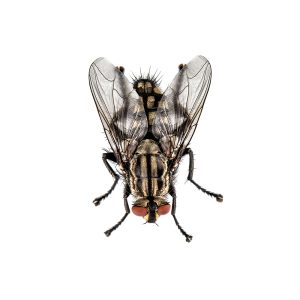
House Fly
House flies are a dull gray with four black stripes down their backs. They are the most common fly found in American homes and restaurants. The house fly is widely distributed and can transmit serious diseases, such as typhoid, cholera, salmonella, dysentery, tuberculosis, and anthrax. During the day, house flies tend to rest less than five feet from the ground on walls, floors, and random items. At night, house flies will change their preference and rest above five feet from the ground on ceilings, light fixtures, dangling light cords, tall plants, etc. The house fly can only eat liquid food, so they spit saliva containing enzymes from their salivary glands on their food to pre-digest it, then suck the food back up to consume it.
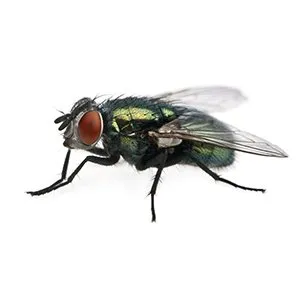
Green Blow Fly
Blow flies are partly or wholly metallic blue, green, or brassy in color. They are sometimes black. Blow flies, also known as bottle flies, are just as bad, if not worse, about transmitting disease than the house fly. Typhoid, cholera, Salmonella, dysentery, tuberculosis, and anthrax are just a few diseases flies can transmit. Blow flies live and breed in dead rotting flesh, but if not available, they will feed on animal excrement, decaying vegetation, or garbage. Dead rodents, birds, or any other small animal can cause an infestation of these flies inside homes and structures. Blow flies are always the first ones on the scene when an animal or human dies. Often, the larvae of the Blow/Bottle fly are used in forensics to determine the time of death in a murder case. Though nasty, they can be a beneficial insect!
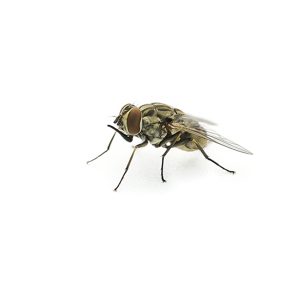
Cluster Fly
The cluster fly has no distinctive marks or stripes. The name reflects this species’ habit of forming compact clusters of hibernating individuals, typically in wall voids, soffits, and attics. As days get shorter and the weather starts cooling down in the fall, cluster flies will start their migration back to structures and homes to begin their winter hibernations. One of the signs of this migration is on the south side of the structure or home. They will begin to cluster on siding and brick walls to stay warm, and typically the south side of the structure will be the warmest. Cluster flies will enter any crack or crevice of a structure to hibernate in. On sunny winter days, cluster flies will become active and enter the inside by squeezing in and around light switch covers, outlet covers, light fixtures, exhaust fans, attic fans, etc. Once inside, cluster flies are attracted to light coming in through windows.
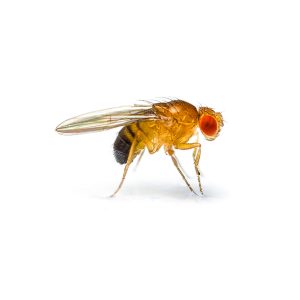
Fruit Fly
Most of the time, its red eyes easily identify this small fly. The fruit fly’s body is tan in the front and black in the rear. They are drawn to ripened or fermenting fruit and vegetables, and they breed in drains, garbage disposals, trash cans, mops, rags, etc. They are mainly considered a mere nuisance, but can sometimes contaminate food with bacteria. Sanitation is the best defense against developing a fruit fly problem. Discarding over-ripened fruits and vegetables will also help prevent this.
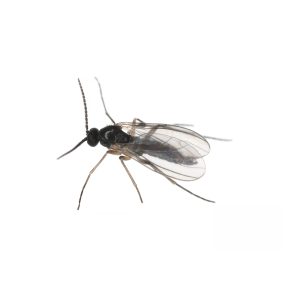
Fungus Gnat
These tiny flies are usually black, brown, or yellowish, and have wings that may have dark patterns on them. Adults are found on or near decaying organic matter, where they lay their eggs and the larvae mature. When gnats are found indoors, it is almost always the result of over-watering plants. Water leaks, moisture problems, or feces in bird cages can lead to a gnat problem. The elimination of breeding sources is the most important step in preventing a gnat problem.
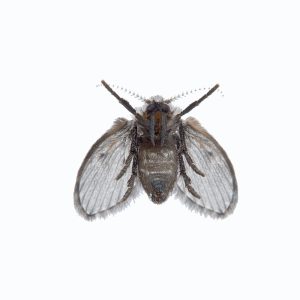
Drain Sewage Fly
These flies have a furry body and wings. Their colors can vary from yellowish to brownish-gray to black, depending on the species. They have segmented antennae with long hairs, and their wings are held roof-like over their body when they are at rest. Because of their small size, drain flies, also known as sewage flies, can penetrate ordinary screens. They are weak fliers and usually crawl on walls and other surfaces when found indoors. When they do fly, it is usually just a few feet at a time! Drain flies breed in sewage, but do not transmit human disease. They may be found hovering above drains, dirty garbage cans, bird baths, clogged gutters, storm drains, moist compost, rain barrels, septic tanks, etc. In minor cases, simply cleaning the drains with very hot water will take care of the problem. In more severe cases, using a stiff brush to clean the inside of the drain will be required to eliminate the slimy film they reproduce in.

